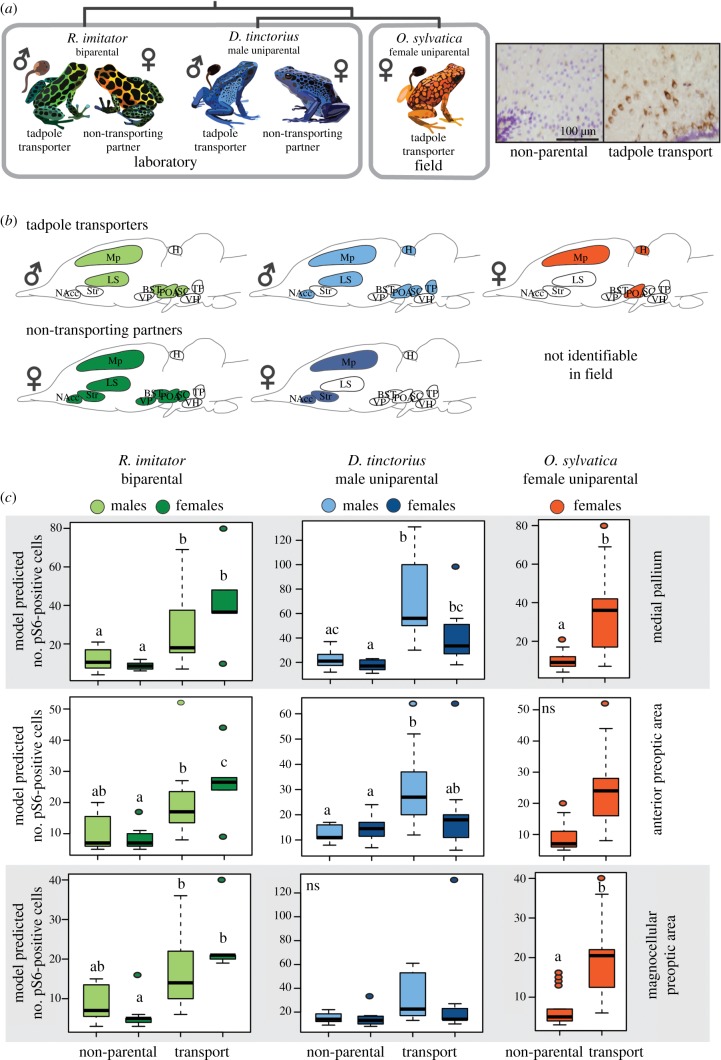Figure 1.
Patterns of neural induction associated with parental care. (a) Overview of experimental design, which allowed us to identify brain regions important in parental care independent of sex and species. (b) Overview of brain regions showing differences in neural activity between parental and non-parental individuals (shaded) for tadpole transporting sex and their non-transporting partners. Symbols indicate the sex of transporting and non-transporting partner individuals. Comparing across species, we identified Mp and POA as active during tadpole transport regardless of sex and species (i.e. as core parental care brain regions). (c) Detailed results for core brain regions. Letters above the box plots indicate statistical differences: comparing groups pairwise, shared letters indicate no significant differences and non-shared letters indicate significant differences (p < 0.05). Representative micrographs of pS6 staining (brown) with cresyl violet nuclear stain (purple) from the mPOA are shown at top right. BST, basolateral nucleus of the stria terminalis; H, habenula; Ls, lateral septum; Mp, medial pallium (homologue of the mammalian hippocampus); NAcc, nucleus accumbens; aPOA, anterior preoptic area; mPOA, magnocellular preoptic area; SC, the suprachiasmatic nucleus; Str, striatum; TP, posterior tuberculum; VH, ventral hypothalamus; VP, ventral pallium. (Online version in colour.)

